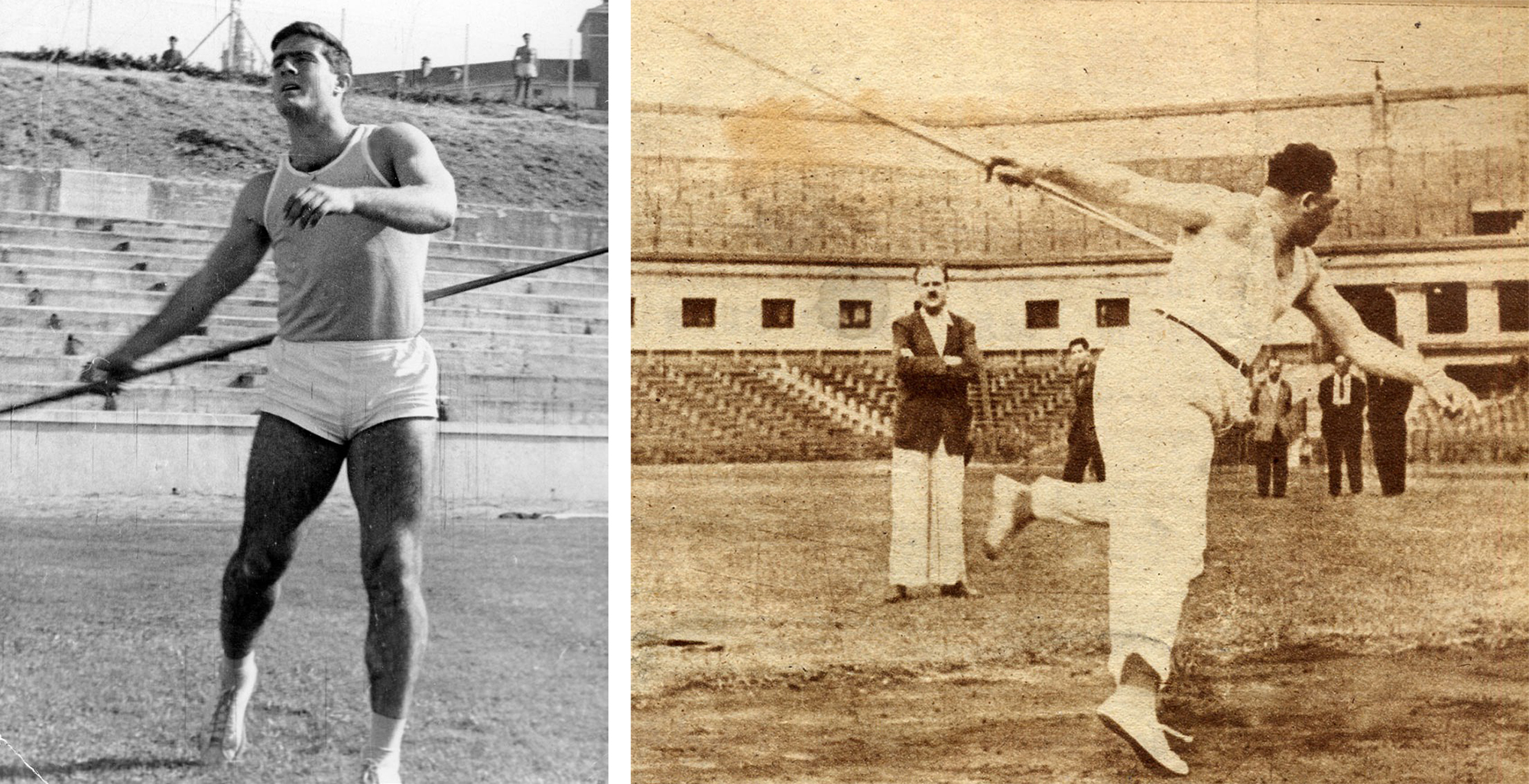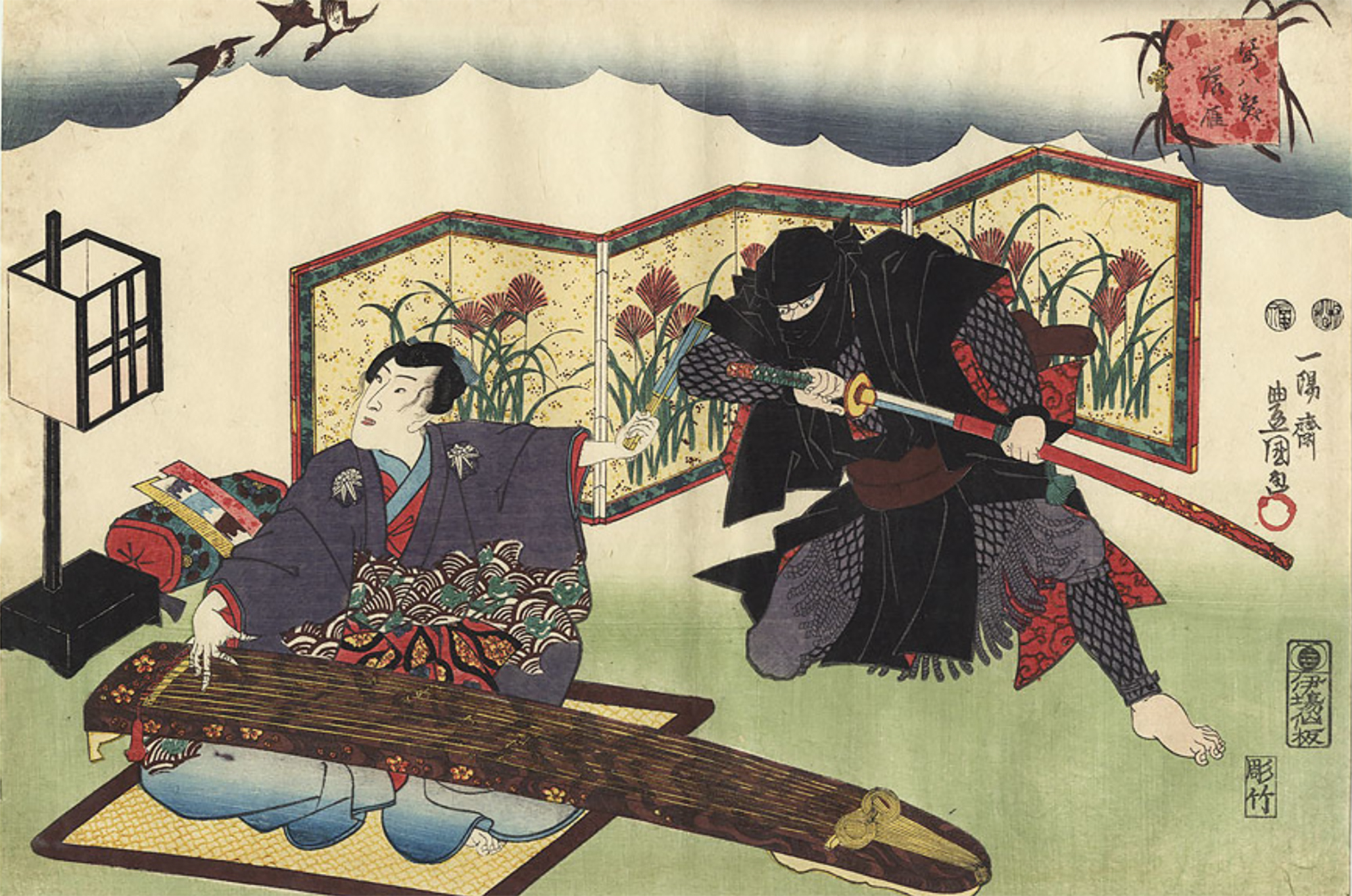Jabalin to the Basque
- Madrid, 21 September 1956. The athlete Miguel de la Quadra-Salcedo Gayarre (1932-2016) sent the javelin at 82.80 meters, breaking the world brand of 81.20 meters of Erik Daniels. But the Basque athlete – although born in Madrid, it was considered Basque, half Biscayan and half Navarro – was also going to destroy the world record by reaching 112 metres. To do so, he released javelin in the form of a “Basque”; some called him “pastor technique”, or “Erauskin technique”, in honor of the inventor, and some media of the time also called him “Spanish technique”.

In 2004 Miguel de la Quadra-Salcedo explained in an interview by Amets Arzallus in ARGIA the details of the special technique. “My friend of Ermua, Félix Erauskin, told me the technique that shepherds used to care for sheep. They threw small hazelnuts in a special style.” The son of Cecilio Erauskin, pastor of the Gorbea, Félix Erauskin (1907-1987), was also a youth pastor. Like Miguel de la Quadra Salcedo, he excelled in athletics in launching tests, winning 19 times the Spanish championship in different modalities. “By casting it, they allowed it to slip into their hands and so it moved much further away from the stick.” Thus, the launcher wet his hand with soap or water to make it easier for the javelin to slip; in the launch tests it is done backwards and use magnesium to prevent slippage.
But Miguel was not the first to use this technique in javelin, but he also saw for the first time his friend Felix Erauskin. Erauskin knew the levers technique perfectly, as he had already broken 8 times the record of the Basque rod
“But it was not my only technique, I add to this style the Basque rod technique. My family was from the Commissions, from Somorface. There, with some bars, the levers, they made the hole and pulled out the ore. Occasionally. Among those who worked, they played championships to see who pulled the bar further. That was the Euskaldun bar. And his technique was that by casting the bar, it was three turns in itself so that the centrifugal force could be transformed into linear force on the road,” as is the case today with the release of hammers. Therefore, this technique that De la Quadra-Salcedo trained in summer on Hendaia Beach was, in addition to “pastor”, “minero”.
But Miguel was not the first to use this technique in javelin, but he also saw for the first time his friend Felix Erauskin. Erauskin knew the levers technique perfectly, as he had already broken 8 times the Basque bar record and won 19 times the Bizkaia championship. In 1956 he demonstrated for the first time in the stadium of Montjuic in Barcelona his innovative way of testing javelin. He was then 48 years old, and soon after, on September 21, the 24-year-old Quadra-Salcedo used the Erauskin style to break all brands.
But by the end of 1956, the International Athletics Federation banned the use of this technique at the Melbourne Olympic Games, because of its dangerousness, because with this technique of turning and sliding the javelin could escape anywhere. Then he adapted the technique: “First they wrote that the javelin didn’t have to turn around and without it he threw it at 95 meters.” Enough to break the world record. But still the javelin made a small spin, which was also banned in other regulations: the tip of the javelin had to look at all times. “There I was amazed.” Therefore, De la Quadra-Salcedo did not break any rules, but modified them later, which was sufficient to override the brands obtained previously. The 112 meter mark would remain the world record, as the best brand is 98.48 meters since 1996.
But in the end this technique served the adventurer Miguel de la Quadra-Salcedo. “It had a great status among the Amazon Indians. That status was never a target, I had the best food, the best hammock, the best fire, all thanks to the javelin, because I pushed it further away.” The International Athletics Federation recognized him what he denied him.
Washington, D.C., June 17, 1930. The U.S. Congress passed the Tariff Act. It is also known as the Smoot-Hawley Act because it was promoted by Senator Reed Smoot and Representative Willis Hawley.
The law raised import tax limits for about 900 products by 40% to 60% in order to... [+]
During the renovation of a sports field in the Simmering district of Vienna, a mass grave with 150 bodies was discovered in October 2024. They conclude that they were Roman legionnaires and A.D. They died around 100 years ago. Or rather, they were killed.
The bodies were buried... [+]
Until now we have believed that those in charge of copying books during the Middle Ages and before the printing press was opened were men, specifically monks of monasteries.
But a group of researchers from the University of Bergen, Norway, concludes that women also worked as... [+]
Florentzia, 1886. Carlo Collodi Le avventure de Pinocchio eleberri ezagunaren egileak zera idatzi zuen pizzari buruz: “Labean txigortutako ogi orea, gainean eskura dagoen edozer gauzaz egindako saltsa duena”. Pizza hark “zikinkeria konplexu tankera” zuela... [+]
Linear A is a Minoan script used 4,800-4,500 years ago. Recently, in the famous Knossos Palace in Crete, a special ivory object has been discovered, which was probably used as a ceremonial scepter. The object has two inscriptions; one on the handle is shorter and, like most of... [+]
Londres, 1944. Dorothy izeneko emakume bati argazkiak atera zizkioten Waterloo zubian soldatze lanak egiten ari zela. Dorothyri buruz izena beste daturik ez daukagu, baina duela hamar urte arte hori ere ez genekien. Argazki sorta 2015ean topatu zuen Christine Wall... [+]
Bilbo, 1954. Hiriko Alfer eta Gaizkileen Auzitegia homosexualen aurka jazartzen hasi zen, erregimen frankistak izen bereko legea (Ley de Vagos y Maleantes, 1933) espresuki horretarako egokitu ondoren. Frankismoak homosexualen aurka egiten zuen lehenago ere, eta 1970ean legea... [+]
Eskultura grekoerromatarrek bere garaian zuten itxurak ez du zerikusirik gaurkoarekin. Erabilitako materiala ez zuten bistan uzten. Orain badakigu kolore biziz margotzen zituztela eta jantziak eta apaingarriak ere eransten zizkietela. Bada, Cecilie Brøns Harvard... [+]
Japonia, XV. mendea. Espioitzan eta hilketa ezkutuetan espezializatutako eliteko talde militarra sortu zen. Edo horixe uste du behintzat Stephen Turnbull historialari britainiarrak. Beste aditu batzuen ustez, askoz lehenago sortu ziren ninjak, duela 2.300-2.500 urte inguru. Eta... [+]
Chão de Lamas-eko zilarrezko objektu sorta 1913an topatu zuten Coimbran (Portugal). Objektu horien artean zeltiar jatorriko zilarrezko bi ilargi zeuden. Bi ilargiak apaingarri hutsak zirela uste izan dute orain arte. Baina, berriki, adituek ilargietan egin zituzten motibo... [+]
Hertfordshire (Ingalaterra), 1543. Henrike VIII.a erregearen eta Ana Bolenaren alaba Elisabet hil omen zen Hatfield jauregian, 10 urte besterik ez zituela, sukarrak jota hainbat aste eman ondoren. Kat Ashley eta Thomas Parry zaintzaileek, izututa, irtenbide bitxia topatu omen... [+]
Luxorren, Erregeen Haranetik gertu, hilobi garrantzitsu baten sarrera eta pasabide nagusia aurkitu zituzten 2022an. Orain, alabastrozko objektu batean Tutmosis II.aren kartutxoa topatu dute (irudian). Horrek esan nahi du hilobi hori XVIII. dinastiako faraoiarena... [+]
AEB, 1900eko azaroaren 6a. William McKinley (1843-1901) bigarrenez aukeratu zuten AEBetako presidente. Berriki, Donald Trump ere bigarrenez presidente aukeratu ondoren, McKinleyrekiko miresmen garbia agertu du.
Horregatik, AEBetako mendirik altuenari ofizialki berriro... [+]
Urruña, 1750eko martxoaren 1a. Herriko hainbat emakumek kaleak hartu zituzten Frantziako Gobernuak ezarritako tabakoaren gaineko zergaren aurka protesta egiteko. Gobernuak matxinada itzaltzeko armada bidaltzea erabaki zuen, zehazki, Arloneko destakamentu bat. Militarrek... [+]
In the Maszycka cave in Poland, remains of 18,000 years ago were found at the end of the 19th century. But recently, human bones have been studied using new technologies and found clear signs of cannibalism.
This is not the first time that a study has reached this conclusion,... [+]

























